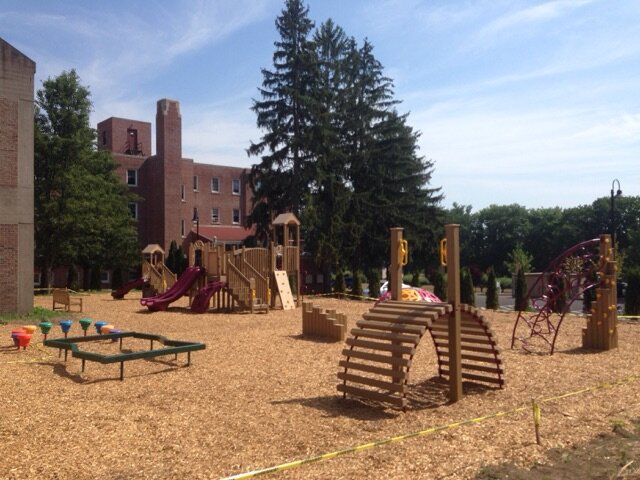Over the past several decades, playground equipment companies have increasingly focused on creating playgrounds for specific age groups. In fact, there are even several regulatory bodies with standards for age-appropriate playgrounds. Kids are better able to enjoy playgrounds built with their age in mind, but enjoyment is far from the only benefit of age-appropriate playgrounds. Here are three other key ways in which kids benefit from these more specialized playsets.

SAFETY
Playgrounds designed with age in mind are much safer for kids in that particular age group. While a 10-year-old may be able to play very safely on a slide or a set of monkey bars, that same structure would not be very safe for a toddler.
There are several ways in which playground manufacturers ensure safety for the target age group. The first is by sizing equipment appropriately. Seats on playgrounds for kids ages 6 – 23 months are a maximum of 7 inches tall, for instance.
Playgrounds for younger age groups, such as day care and preschool playgrounds, are also made with soft and padded flooring to reduce the risk of injuries if a child should fall. For example, poured-in-place rubber playground surfacing is perfect for these early age kids. It comprises 2 layers – a cushioning layer with customizable thickness, and a decorative top layer that allows for creative freedom. PIP rubber surfacing also works best for ADA-accessible playgrounds designed to include children with disabilities.
SENSORY STIMULATION
Children have different mental and sensory stimulation needs as they grow. Age-appropriate playgrounds are designed with this in mind.
Playgrounds for pre-toddlers use different textures to stimulate and develop the tactile senses. They also use a lot of bright colors. Playgrounds designed for toddlers tend to focus more on developing the sense of balance and coordination. You’ll see play structures with balance beams, steps, small swings, and the like.
Elementary school playground equipment for kids between the ages of 5 and 10 are designed for more whole-body activity, bodily awareness, and strength building. This is where you see monkey bars, slides, and climbing structures.
Outdoor musical instruments such as chimes, drums, xylophones and cow bells are perfectly tuned sound sculptures in different sizes and designs for children from toddlers to teenagers. They help develop a lifelong love for music and are often painted in bright colors to stimulate the senses of younger kids.
BETTER EXERCISE
Sensory development and exercise are closely related in older kids, but a bit more differentiated in younger kids. Playgrounds designed for pre-toddlers encourage movements like rolling and bouncing. Those designed for toddlers encourage more climbing and use of the large muscle groups. As described above, playgrounds designed for elementary school kids tend to engage the body more than the mind with more intense physical activities like swinging hand-over-hand.
When you build age-appropriate playgrounds, you want to build playgrounds that are safer and more stimulating for the kids who use them. Playgrounds are a place for fun, but they can also be a place for learning and development if designed with those needs in mind.